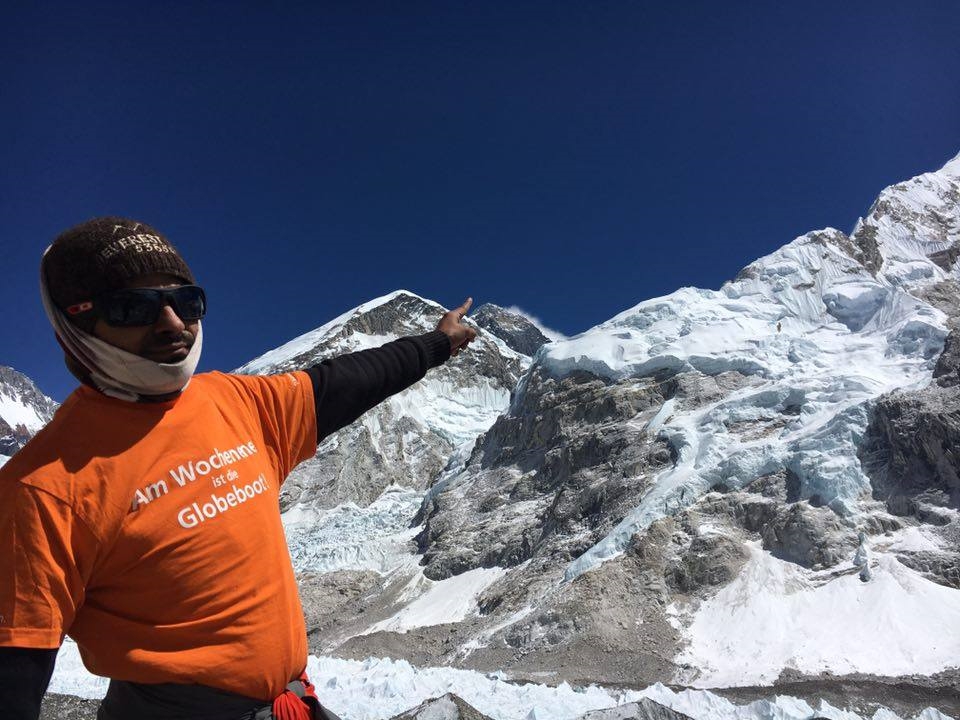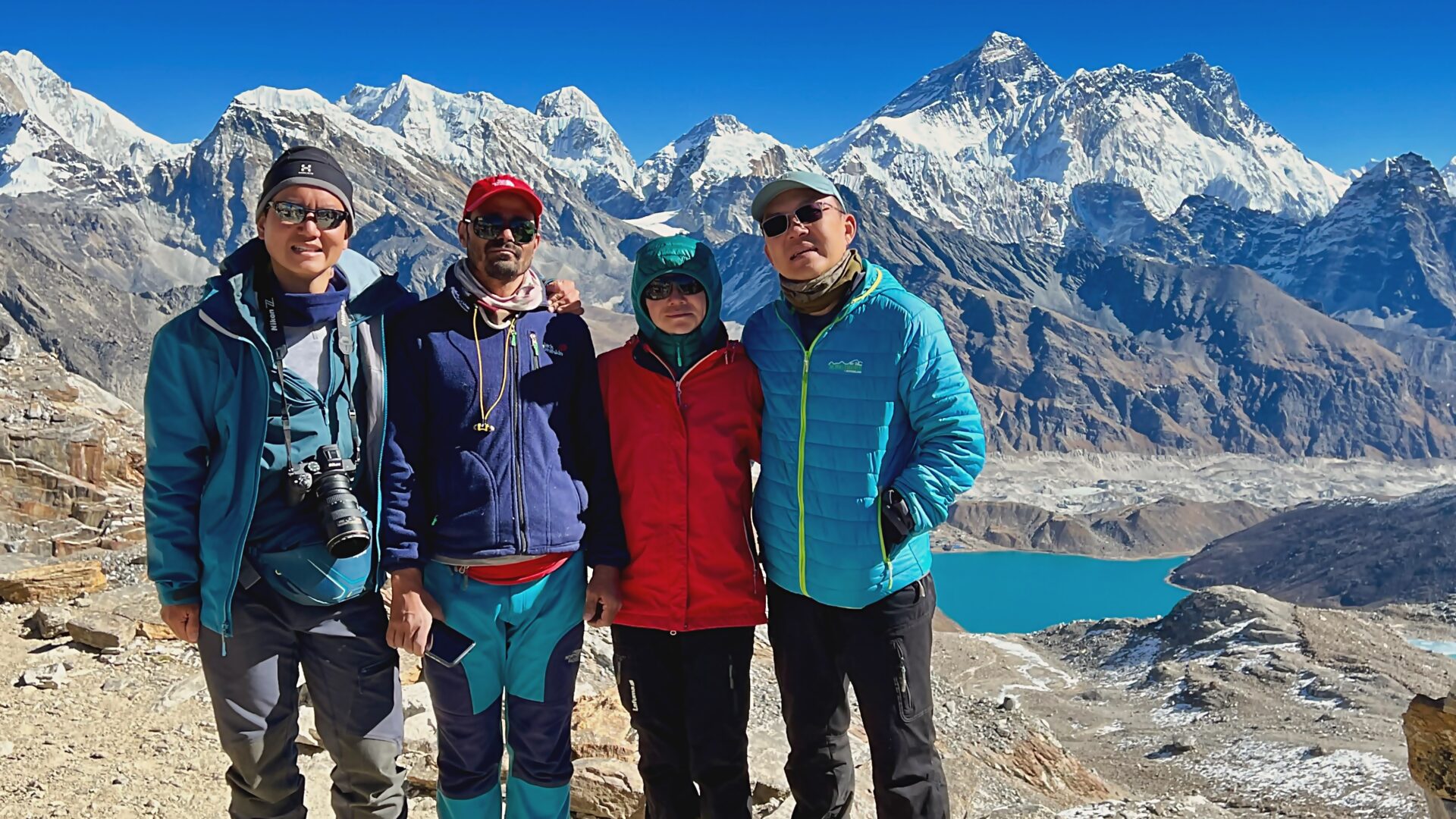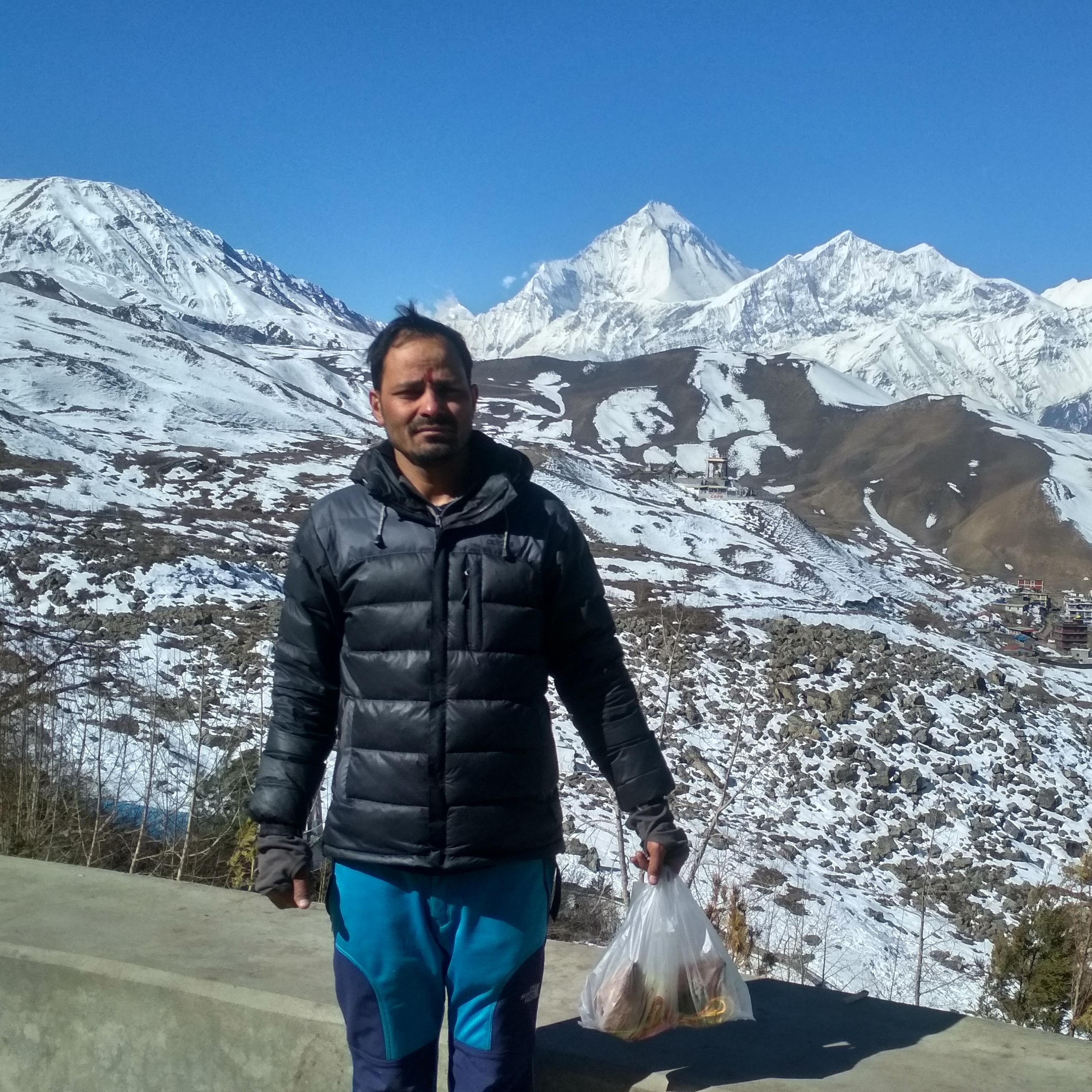Everest 3 High Pass Trek
Everest 3 High Pass Trek Highlights
- Trekking across the three major high pass
- The Sagarmatha National Park
- 118 bird species, rare mammals and wide species of flowers
- Khumbu Glacier (4900 m) - the highest glacier on earth
- Nepal’s highest airport Syangboche
- UNESCO World Heritage Sites
- Trek to the remote and hidden area of the Everest region
- Witness Everest base camp and Kala patthar
- Everest hotel –one of the world’s highest hotels
- Explore Mt. Ama Dablam, Mt. Lhotse, Mt. Everest, Mt. Nuptse, Mt. Thamserku and many more.
Everest 3 High Pass Trek are the most daring and difficult trek in the Everest region. For those seeking an exhilarating and daring Himalayan trek in Nepal, this is the ideal trekking option. Trekking the Everest three passes offers an up-close view of the unfamiliar landscape, icy altitude, and never-ending personal struggle at extremely high altitudes. Through the three highest passes in the Khumbu region—Kongma La Pass (5535 m), Cho La Pass (5420 m), and Renjo La Pass (5340 m)—you will reach Everest base camp on this trek. You’ll be able to discover the undiscovered areas of the Everest region.
Furthermore, the 1148 square kilometer Sagarmatha National Park is the location of the Everest 3 high pass trek. Plants are absent from this area at elevations higher than 5750 meters, and the vegetation here is quite small. In addition to rare mammals like snow leopards, musk deer, Himalayan black bears, and red pandas, this national park is home to 118 different species of birds.
Likewise, the path winds through a number of lovely valleys and charming villages where you can learn about the Tibetan ethnic group (Sherpa). They are indigenous to the tallest mountains in Nepal. Sherpas build gompas as places for their religious observances. The area’s first celibate monastery was Tengboche. Most sherpas practice Buddhism. Their way of life and culture are equally fascinating. The Lhosar festival is their principal celebration. It takes place in March or February. In addition, they observe a festival known as Mani Rimdu. Usually, October is when it occurs. The Sherpas attach great importance to the festival. The Tengboche monastery has a huge celebration for it.
Sherpas oversee the majority of the lodging options in the Everest region. The people who live in the Namche village are Sherpas. Thus, you will receive excellent hospitality from them when you visit Namche. From the bottom of their hearts, the locals extend a warm welcome to climbers and visitors.
Best season for Everest 3 High Pass Trek
To put it simply, any time of year is ideal for completing this hike, but in particular, autumn is the busiest time of year for travelers from around the globe to visit Nepal. Similarly, it’s regarded as the ideal time because it’s not too hot or too cold and there are a lot of wildflowers in bloom, creating a cool, pleasant atmosphere that’s ideal for trekking.
Since gorgeous flowers bloom and new leaves begin to grow, spring is also one of the best seasons for trekking. The entire area turns green, providing you with clean air and aesthetic pleasure. The monsoon and winter, however, are the second-best seasons for trekking. Trekking during the monsoon season makes the trail more difficult. The path is slick and muddy due to the recent heavy downpours. You have to take caution when walking. Similarly, the Everest region is completely encircled by snow in the winter. Walking and navigating the trails will become challenging as a result.
Foods and Accommodation
The teahouses and lodges serve a variety of foods. It includes continental and Chinese fare such as steaks, spaghetti, noodles, and spring rolls. Additionally, pizza, macaroni dishes, momo, soups, sandwiches, etc. Eating light during lunchtime is preferable because it will help you feel lighter and more at ease while you walk. However, in addition to the traditional Nepalese meal of Dal Bhat, we always advised garlic soup as a natural way to avoid altitude sickness when traveling at high altitudes.
There are a number of tourist-friendly teahouses along the Everest 3 High Pass trekking route, offering simple lodging options. If you pay more, you can get a luxury room in the lower area. The rooms become available on a twin-sharing basis as you go higher. Shower and restroom usage will be shared. There are two mattresses, a pillow, and cozy blankets in a room.
Fitness/ Experience
Qualifications for the Everest 3 High Pass trek include physical fitness level, health, and medical. There is no difficult trekking route on the Everest High Pass. Your typical hiking experience will last between four and five hours, depending on your destination. Therefore, trekkers with heart or lung conditions, or those with chronic illnesses, are not advised to attempt this trek. It is best to stay away from this trip. All hikers with an average level of fitness, however, can easily finish this trail. While not required, it will be advantageous if you have any prior hiking experience or engage in regular exercise.
Travel Insurance
Travel insurance is required for any trek in Nepal, including the Everest 3 High Pass Trek. The journey involves trekking at high altitudes, which can be hazardous and physically taxing. Make sure your Everest high pass travel insurance covers emergency helicopter evacuation and high altitude trekking, as these can be costly without coverage. Get more information about adventure sports, hiking, and mountaineering, among other things.
Altitude sickness
Above 3000 meters in the mountains, altitude sickness is a common occurrence. Your body tries to adapt to the lower oxygen and air pressure at high altitudes by producing symptoms like headache, nausea, exhaustion, shortness of breath, difficulty sleeping, appetite loss, rapid pulse, and severe dehydration, among others. When trekking in the Everest region, if you experience any of these symptoms, you should seek medical attention right away to avoid complications.
The following advice has been tested by our knowledgeable trekking guides to help you avoid altitude sickness on the Everest High Pass Trek:
- Stop and rest where you are.
- Make sure you’re drinking enough water.
- Do not smoke, drink alcohol or exercise.
- Eating foods and drinking fluids that contain carbs.
Guide and Porter
Although the Everest 3 High Pass Trek can be completed alone, we advise hiring a certified trekking guide for a better experience and to get your TIMS card and PERMIT through approved trekking organizations that are registered with the Nepali government. Nonetheless, our guides are very knowledgeable, helpful, polite, fluent in English, and well-trained. Of greater significance, they possess a trekking guide license, guide insurance, and technical competence. They always have the necessary tools, supplies, and first aid kits on hand. A guide provides you with information about the customs, traditions, and history of the local people while serving as a liaison between you and them.
Everest 3 High Pass trek permit
Similar to other Everest treks, two separate permits are required. They are the local tax for Khumbu Pasang Lhamu Rural Municipality and the permit to enter Everest (Sagarmatha) National Park. Before reaching Namche Bazar, in Kathmandu or while traveling to Manjo, one can purchase a Sagarmatha National Park Permit. Additionally, you must pay the local tax in Lukla for Khumbu Pasang Lhamu. Our guide will handle and carry all necessary trekking permits, and upon successfully finishing the trek, he or she will give you the permits. You will subsequently receive a trekking certificate from Nepal Holiday Treks and Tours Pvt. Ltd. for a wonderful experience.
Special Equipment and things suggested for Everest 3 High Pass Trekking
- Good quality trekking boots and crampon.
- Water bottles or hydration system (at least 2 Liters capacity).
- Water proof cover for your back pack.
- Sleeping bag and waterproof and warm clothing.
- Moreover, as you know 3 pass trekking is the most difficult trekking trip, so in pass trekking day you have to wake up early (around 430 am) and start walking. And you have to compulsory carry a pack lunch and 3- 4 liters water from tea house.
Everest 3 High Pass Trek Itinerary
Fly from Kathmandu to Lukla and Trek to Phakding
Trek from Phakding to Namche Bazzar
Acclimatization day at Namche
Trek from Namche Bazzar vto Tengboche
Trek from Tengboche to Dingboche
Trek from Dingboche to Chukkung
Rest Day at Chukkung and Hikie to Chukkung-Ri
Trek to Chukkung to Kongma-La to Lobuche
Trek from Lobuche to Gorakshep to Everest Base Camp
Trek from Gorakshep to Lobuche
Trek from Lobuche to Dzongla
Trek from Dzongla to Cho-la to Gokyo
Rest day in Gokyo and Hike to Gokyo-Ri
Trek from Gokyo to Renjo-la to Marlung
Trek from Marlung to Namche Bazzar
Trek from Namche Bazzar to Lukla
Fly from Lukla to Kathmandu and Transfer to Hotel
Everest 3 High Pass Trek Inclusions
What's included
- Domestic flight from Kathmandu to Lukla to Kathmandu
- Pick and drop from Domestic airport to hotel and vice versa
- Trekking permits and TIMS card
- Three times meals a day- Breakfast, Lunch, Dinner and accommodation in teahouse/ lodge during the trek
- One experienced (government licensed) and qualified English speaking guide
- One porter for two trekkers
- Guide/ Porters: food, lodge, transportation, salary, insurance, equipment etc
- Equipment (sleeping bags, down jackets, maps, trekking poles etc)
- All taxes and company service charges
Add-ons
What's not included
- International airfare and visa fees
- Lunch and dinner in Kathmandu
- Personal expenses of bar and beverage bills, wifi, hot shower, bottle of water, extra porters, laundry or any other things which are not mentioned by the company
- Your trekking gears and extra nights in a certain destination
- Your travel insurance which should include the emergency rescue
- Tips for your guide and porters
- Entrance fees during the sightseeing
- Extra expenses due to any event such as strikes, weather conditions, or flight delays
Everest 3 High Pass Trek FAQs
Is the Everest Three High Passes trek one of the toughest and most difficult treks in Nepal?
The trek over the Everest Three High Passes is not very strenuous or technically challenging. The most difficult part of the crossing might be going through deep snow conditions, which can make it more difficult. Still, all in all, it's an exciting walk along similar lines to other walks at high altitudes. Although it may seem difficult to cross passes higher than 5,400 meters in a few days, hikers in good physical shape can still have fun with the experience.
How are the lodges, food, and facilities for charging electronic items on the Everest Three High Passes Trek?
Following Namche Bazaar, there are basic lodge accommodations with shared restrooms and showers. Excellent food options are available, with a menu that includes Chinese, Indian, Nepali, and Continental dishes. Additionally, some lodge restaurants serve Italian, Mexican, Japanese, or Korean cuisine. Most lodges after Tengboche and Pangboche use electricity produced by small hydro plants to charge their electronic devices. Lodges in the areas beyond Dingboche generate electricity with solar power; guests can pay extra to have their devices charged.
What types of flora can be found in this region?
The region around Everest Base Camp (EBC) has a wide variety of flora in its different altitudinal zones. Rich vegetation, such as rhododendron, pine, oak, and bamboo forests, flourishes at lower elevations. The terrain changes as you climb to alpine meadows, dominated by dwarf shrubs and hardy plants like juniper. Higher up, above the tree line, the vegetation becomes sparser, with alpine plants and mosses that have adapted to the severe mountain climate. The area is well-known for its distinctive and hardy wildflowers that bloom in the Himalayan wilderness, despite the harsh weather.
What is the ideal age for enjoying the adventure of crossing the Everest Three Passes?
As long as hikers are in good health and physical shape, age is not a barrier. The minimum age permitted is 14 years old, with parents or guardians present for safety reasons. Usually, the maximum age is 65, though some people 70 years old may join if their doctor gives the okay. If your insurance company gives the go-ahead, trekking is still permitted even though obtaining medical insurance for people over 60 may be difficult.




